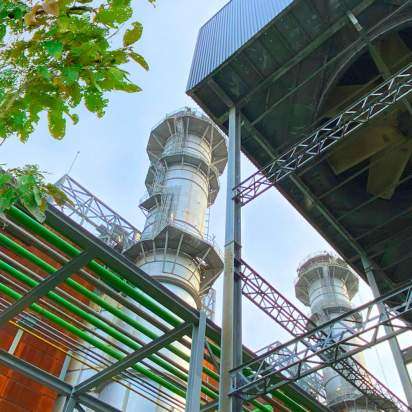
The Nortegas H2SAREA and BENORTH2 projects, amongst the Spanish initiatives to prepare the European gas grid for hydrogen.
As hydrogen is set to become one of the main energy carriers for Europe, transporting large volumes of hydrogen through the existing gas infrastructure would be a viable and cost-efficient solution.
In line with this objective, the aim is to accelerate the European decarbonisation process through the development of hydrogen infrastructure, based on both new and existing pipelines. The proposals to promote the use of the gas distribution network for hydrogen transport are now being seen in Spain. According to the European Commission, Spain is the European country with the greatest potential for production and export of this fuel, due to the seasonal nature of consumption and the high share of renewable power production.
In a Think Tank promoted by Sedigas for the study of hydrogen injected into the natural gas network, specific mention was made of the high level of gas infrastructure in Spain, with a widespread, well-maintained and sufficiently meshed network capable of transporting hydrogen to consumption points, including both combined cycles and industries, refuelling stations and domestic consumers themselves. At the same time, it was noted that there is a need to modify the legislation governing the injection of hydrogen into natural gas infrastructure since, although current regulations already allow a certain degree of blending, further development is required.
Two of the projects led by Nortegas and designed to address the challenge posed by the storage and distribution of hydrogen are H2Sarea and BenortH2.
The first, launched in 2021, explores the injection of this renewable gas into existing natural gas distribution networks. H2Sarea seeks to analyse the behaviour of infrastructure and equipment that currently use natural gas, both in domestic and industrial facilities, once it is mixed in different increasing percentages with hydrogen, and to develop new technological solutions for the progressive transformation of the distribution network. In this sense, the project is expected to promote R&D of hydrogen injection systems, advanced compression systems, development of specific smart fasteners, research into new materials and components suitable for use in 100% hydrogen environments and in variable mixtures with natural gas, as well as modular systems for hydrogen separation, sensors and burners.
BenortH2, presented this year, will build the largest hydrogen network in Spain, initially stretching over more than 15 kilometers across eight municipalities in Bizkaia. Plans are in place not only to produce a blend of hydrogen and natural gas for use in the city gas network, but also its distribution for industrial and transport uses, and for the activity of the combined cycle power plant in the town of Amorebieta.
The project involves an initial investment of 50 million euros for 20 MW, but the objective is to increase the generation capacity to 200 MW before 2030, which will imply a total budget of 300 million euros. The main breakthrough will be to advance in the development of a blend of natural gas and hydrogen that can be used in the current distribution network.
In a second phase, a 20 MW electrolyser operation is planned, making it possible to obtain more than 2,000 tons of hydrogen per year. Production will be distributed between the gas consumption network managed by Nortegas (4.38 tons per day), a turbine that will power the facility (0.96 tons per day) and a distribution system for industry and transport (0.14 tons per day).
Link: The European gas network prepares for hydrogen - Gas Actual | SEDIGAS - Spanish Gas Association




